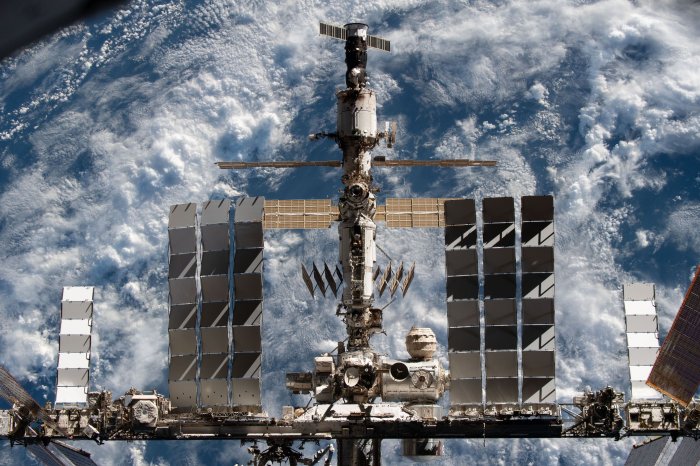1 of 5 | A poster designed by NASA artists depicts people visiting Jupiter's moon Titan, which has liquid methane oceans. Image courtesy of NASA
ORLANDO, Fla., Oct. 25 (UPI) -- NASA knows people can't travel to exoplanets light-years away, but the space agency hopes a new, highly fictionalized video will inspire dreams of such far-off travel.
The video depicts wild, even wacky, scenes of people kayaking in deadly methane lakes on Saturn's moon Titan, skydiving on exoplanet HD 40307-g, which is 42 light-years away, and watching twin suns on Kepler-16b -- 200 light-years away.
NASA released the whimsical video, which is just over a minute long, last week. It can be seen on YouTube, where it had over 40,000 views in just a few days. The scenes are borrowed from the space agency's popular poster series called Visions of the Future that began in 2015.
Those posters have been downloaded millions of times, and are among the most popular features on NASA's website, Thalia Khan, a communications specialist, said in an interview.
"We wanted to depict places people would potentially want to go to," Khan said, quickly adding, "Of course, they can never actually go to them because they're too far, but we wanted to get people excited about what exists out in the universe."
Destinations in the video include some places people may visit in the not-too-distant future, like Mars. NASA plans to send astronauts to the Red Planet in the 2030s.
But exoplanets that circle stars light-years away will have to wait, since NASA still has no way to travel even close to the speed of light. Travelers would spend most of their lives just getting to such destinations -- even if light-speed travel becomes a reality, Khan said.
"Some of these destinations have captured the public imagination, such as Kepler-16b," she said. "When that was discovered in 2011, it was nicknamed Tatooine" after the double-sun world in the original Star Wars movie.
The activities depicted in the video may be impossible, but creative teams worked to ensure the planetary conditions portrayed represent real science, said Chris Smith, who produced the video.
"There is a ton of work that goes into working directly with the scientists to make sure ... we are representing science accurately," Smith said.
He said the video was created in-house by NASA employees who worked on it when they had a chance over a period of months, using existing equipment and props.
"We started with the concepts in the posters and asked ourselves how we could portray that in a video," Smith said. "The few actors we used were all volunteers."
He noted the vast majority of reaction so far is positive.
"My favorite comments are when people say, 'I really would love to go there, this is really exciting!'" Smith said. "That's what NASA is all about."
The first three posters released in 2015, which are free to download on NASA's website, weren't even meant for public viewing, NASA artist Joby Harris said in an interview.
"We made them to decorate a new office set up for scientists studying exoplanets," Harris recalled. "Then there was so much interest we put them online for downloading, and it took off from there."
He said many tech and space accomplishments started out with crazy ideas and dreams of writers like Jules Verne and Isaac Asimov.
"I think NASA has been blown away seeing how people love the wonder, the mystery of how we might explore space someday, and that helps prompt innovation."
The International Space Station is pictured from the SpaceX Crew Dragon Endeavour during a flyaround of the orbiting lab that took place following its undocking from the Harmony module’s space-facing port on November 8. Photo courtesy of NASA
















